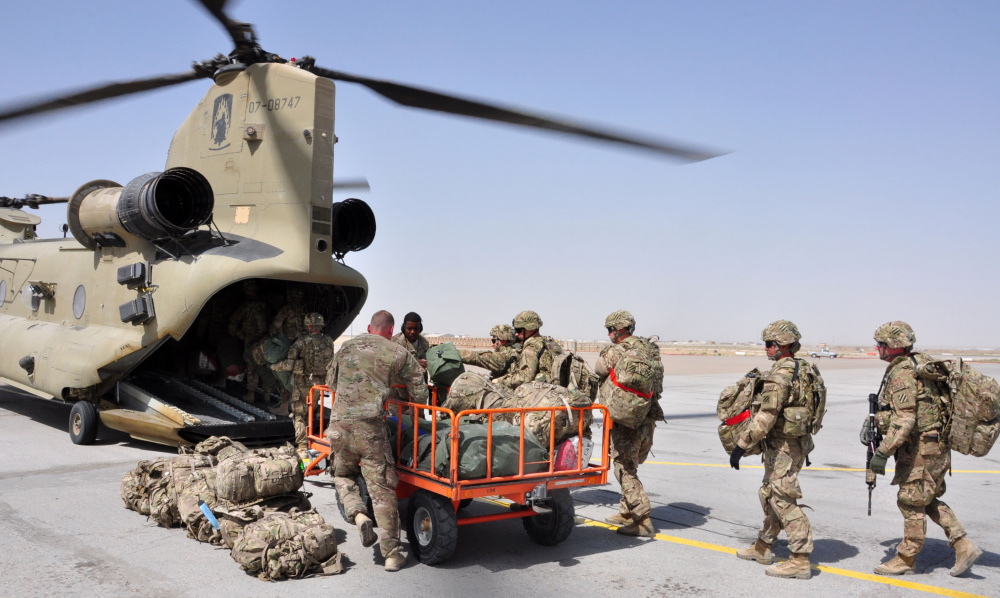The rotary wing aircraft is a key Army capability. From the ever present UH/HH-60 Black Hawk family to the CH-47 Chinook, the AH-64 Apache, and the relatively new UH-72 Lakota, these aircraft have become significant force multipliers. These aircraft transport personnel and equipment, and deliver lethal firepower, across every imaginable terrain and environment. In addition, the ability of rotary wing aircraft to land and take off from just about anywhere is essential to the role of military quick reaction forces and medical evacuation (MEDEVAC) teams.
All these airframes and missions have one thing in common: they need protection in the air. No one knows this better than Project Manager Aircraft Survivability Equipment (PM ASE); its right there in the name, after all. And in 2020, Product Manager Infrared Countermeasures (PdM IRCM) pushed hard to hone their product to a sharper edge.
The result?
PdM IRCM is the winner of the 2020 Army Acquisition Executive’s (AAE) Excellence in Leadership Product Manager Team of the Year, standing out among over 160 other product offices.
Lt. Col. Preston Pysh, the Product Manager for IRCM, led a core team of 21 people to this success.
Pysh and his team are responsible for the Common Infrared Countermeasure (CIRCM), a laser-based infrared countermeasure system designed to interface with the Common Missile Warning System (CMWS) and Limited Interim Missile Warning System (LIMWS), as well as future Missile Warning Systems.
Modular Open Systems Architecture (MOSA) has become a key method of software and hardware architectures, ensuring forward and backward capability and compatibility across different systems.
To ensure this, Pysh and his team leveraged MOSA, which has become essential to the acquisition process in recent years. The team looked to the Navy’s Key Open Sub Systems or KOSS Tool. Naval systems and their interactions are some of the most complex among the branches as the Navy integrates air, sea, and land assets, including those of the Marine Corps.
“KOSS was brought to us as a ‘you should consider this,’ suggestion” said Maj. Lukasz Derda, the Assistant Product Manager for IRCM. “We accepted MOSA based on many of the principles that KOSS embodied. This allowed us to look at certain components individually as technology matures versus a whole system replacement. Being able to break a system down for future upgrades helped us formulate the way we structure our system and reduce total ownership costs.”
“ASE is constantly evolving to ensure capability overmatch,” said Pysh. “In order to stay ahead of our peers, we have to be able to make adjustments or improvements rapidly. Additionally, the agility needs to be achieved in a cost effective way that doesn’t require all new hardware. Our material is produced in large quantities so getting the adaptability right is vital for ensuring future IRCM costs are minimized so the savings can be put towards future modernization efforts at the Army level.”
MOSA has paid off for the product on multiple levels; first, with the inclusion of an additional countermeasure laser wavelength, which targets emerging threats. By using MOSA, the team determined that the upgrade required only slight modification to one Line Replaceable Unit (LRU), and that unit will now field two years ahead of schedule. This effect ripples outward, as it will save $30 million in retrofit costs due to the speed and architecture that was used in the engineering design.
MOSA is merely a method and procedure, however, and the real key to any military operation is the right people in the right place at the right time. ICRM placed the right people on task by implementing their own “Tiger Team,” a cross-functional team concept that was made famous by the Apollo 13 mission. When part of the Apollo service module malfunctioned and exploded, a select team of experts was assembled to ensure the astronauts’ safe return.
Aircraft Survivability Equipment isn’t so different, as its mission is also to bring people home safe. So, PdM IRCM created their Reliability Tiger Team.
“We learned early on in the program development that reliability was going to be challenging and important for getting to production,” said Pysh. “As a result, the team determined that getting to root cause was a critical focus. Through the Tiger Team, we were able to improve reliability in a significantly shorter time frame. This is a testament not only to our team, but also our industry partners and their integration with the testing teams to refine and improve the product. The key was making reliability a priority at the management level and aligning resources appropriately.”
“The biggest principle that carries over – that works anywhere – is focus on teams,” said Derda. “Enabling those teams to make decisions drives success. Having the right people in the right place and empowering them to work together with transparency, results in better discussions and solutions that in the end, make a much better product.”
From their award: “For exceptional performance and leadership service by the PdM Infrared Countermeasures Team of Project Management Office Aircraft Survivability Equipment. The IRCM team demonstrated transformational leadership capabilities by delivering superior combat capability to the warfighter. A major leap in technology, Common Infrared Countermeasure (CIRCM) provides significant weight and power reductions while increasing combat capability to Army aviation. With direct oversight from the Army Test & Evaluation Command and the Director of Operational Test & Evaluation, CIRCM flew 2,303 open-air flight test events on operational aircraft and performed a Logistics Demonstration soldier touch-point to stress end-to-end logistical support and maintainer performance. At a White Sands Missile Range capstone event, the system achieved 12 successful free flight missile events against single threats, 4 successful free flight events against dual threats, and the Army’s first quadruple threat defeat. Lastly, the program achieved First Unit Equipped with the 1st Air Cavalry Brigade three months ahead of the Acquisition Program Baseline ‘Objective’ date. The achievements of the CIRCM Team and Product Manager Infrared Countermeasures reflect great credit upon themselves, the Program Executive Office for Intelligence, Electronic Warfare and Sensors, Office of the Assistant Secretary of the Army (Acquisition, Logistics and Technology), and the Department of the Army.”

